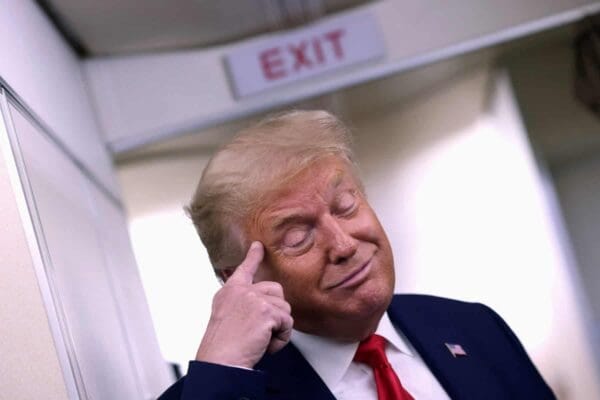“God put the Republican Party on Earth to cut taxes. If they don’t do that, they have no useful function.” — Robert Novak
On Wednesday, President Donald Trump put a 90-day pause on some of his tariffs. On Thursday, House Republicans approved the Senate’s budget resolution, which is a precursor to passing filibuster-proof “budget reconciliation” legislation that cuts taxes. Are we seeing the return of the traditional Republican Party, the one you can count on—no matter the economy—to lower your tax burden?
Nope. Trump kept tariffs in place that increase your taxes. And the budget reconciliation bill is unlikely to lead to a net tax cut, especially for those in the working class who are hit hardest by giant import duties.
Trump’s partial retreat, prompted by the panic that was spreading in the typically calm federal bond market, still leaves in place a 10-percent base tariff on imports from nearly every country, with Canada and Mexico tagged for 25 percent and China, the world’s second-largest economy, at 125 percent; another 25 percent tariff on steel, aluminum, and automobiles; another 10 percent for Canadian energy; and a 20 percent tariff penalty on China for lax fentanyl enforcement.
The Budget Lab at Yale calculated the impacts of this tariff regime (except for the fentanyl penalty on China) if it sticks for 10 years. It estimated the feds would collect $2.4 trillion in tariff revenue. The average household would lose annual purchasing power of $4,364 thanks to the Trump tariffs.
What size tax cuts do Congressional Republicans have in store? The newly passed budget resolution allows for $5.3 trillion in tax cuts over 10 years, but $3.8 trillion of that is the cost of extending 2017 tax provisions enacted due to expire soon. Only as much as $1.5 trillion would be for new tax cuts, not enough to offset the president’s mammoth $2.4 trillion tariffs.
Furthermore, the distribution of the tax benefits is unlikely to track the distribution of the tariff pain. Tariffs are inherently regressive. Poorer households pay a much larger share of their income for goods than wealthier households. Plus, many households are too poor to pay any federal taxes and, therefore, stand to gain nothing from federal tax cuts despite shouldering the costs of tariffs.) But tax cut proposals promoted by Trump, such as the elimination of taxes on Social Security income and overtime pay, might sound friendly to lunchpail Joes and Janes but skew the benefits toward higher-income households.
Precisely where Trump’s tariff increases and the Republican tax cuts finally land remains to be seen, but this is a classic case of the right hand not knowing what the far-right hand is doing. The budget resolution squeaked through Congress despite disagreements between the Republican factions on how big the tax and spending cuts should be. Trump’s tariffs, as we’re painfully learning, can change at any time. The global economy may stagger in uncertainty for the next three-and-a-half years, careening because Trump woke up on the wrong side of the bed and wants to slap a new tariff on an industry or country.
Congressional Republicans could impose certainty on the situation. They could partner with Democrats to strip Trump of unilateral tariff-hiking powers in big enough numbers to overturn a veto. Legislative measures have been introduced already. One eked through the Senate last week with the help of a few renegade Republicans but isn’t getting House consideration.
Calling on supine Republicans to break with Trump sounds ludicrously unrealistic. But without that break and short of complete surrender on tariffs by Trump, Republicans will be using their governing trifecta to raise, not lower, the net taxes of Americans. According to the late conservative columnist Robert Novak, that would render the Republican Party without a useful function. At a minimum, it would raise the question: What does the Republican Party stand for beyond fealty to a tax-raising Donald Trump?











